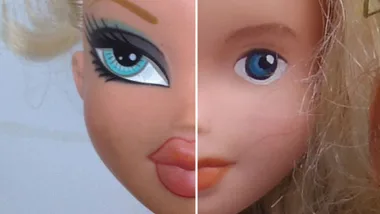Last year actress Lupita Nyong’o electrified the world with her speech on beauty and how she finally accepted that her dark skin was beautiful.
“I hope that my presence on your screens and in magazines will lead you, young girl, on a similar journey. That you will feel the validation of your external beauty, but also get to the deeper business of being beautiful inside. There is no shade in that beauty,” she said at the time.
The speech went a long way in pushing the message that black is beautiful, a message that a Nigerian father, Taofick Okoya, is determined to carry on with his range of The Queens of Africa dolls and Naija Princess dolls that he started in 2007. The entrepreneur was inspired to create the dolls after noticing that his daughter only played with white dolls.
“All the dolls in the house were all white, and I was like, ‘Oh, OK, that’s a problem,’ ” Okoya says in a video promoting the range. “Because when you load a child with all this, it becomes an acceptable form of … how you should look. And so I thought, I want to use my dolls to teach Nigerian culture, African culture.”
It’s a long running problem. In her 2013 piece Why Black Dolls Matter Lisa Hix wrote of the slim pickings – and the prejudices – that exist when it comes to black dolls. That is, that there aren’t many of them, because, according to executives, ‘they don’t sell.’
And indeed this often points back to research conducted in the 1930s that asked a group of black children whether a pair of identical dolls (except that one was black and one was white) which doll was nicer and prettier, the children overwhelmingly said that the white doll was prettier.
Which says a lot about why black dolls DO matter. As Debbie Behan Garrett, the author of “Black Dolls: A Comprehensive Guide to Celebrating, Collecting, and Experiencing the Passion,” says in Hix’ piece,
“I’m emphatic about a black child having a doll that reflects who she is.”
“When a young child is playing with a doll, she is mimicking being a mother, and in her young, impressionable years, I want that child to understand that there’s nothing wrong with being black. If black children are force-fed that white is better, or if that’s all that they are exposed to, then they might start to think, ‘What is wrong with me?”
For Taofick Okoya, creating dolls that look like his daughter has proved a success. He is selling 6,000 to 9,000 dolls each month, and tells Reuters that he now has 10-15 per cent of the small but growing Nigerian doll market. Barbie better watch her back. And in fact she is, with Okoya’s Queens and Princesses outselling Barbie in Nigeria.
But for Okoya, whose dolls represent three different groups in Nigeria, Nneka is Igbo, Wuraola is Yuruba, and Azeezah is Hausa and are dressed in traditional African clothing, it hasn’t been an easy sell. He told Elle magazine,
“The first reaction we got from retailers was resistance. They said, ‘black dolls don’t sell.’ I then embarked on an educational campaign via various media, telling people about the psychological impact dolls have on children, and dolls in the likeness of the African child can have on them. It took almost three years for the idea to get accepted,” he said.
Resistance also came from children, Okoya told Elle, meaning that the dolls were adapted to more ‘acceptable’ bodies and facial features. For now.
“We plan to change this and add identifying African characteristics such as curvier bodies, bigger hair textures and fuller facial features. We adapted contemporary design using African prints. We are gaining acceptance but I don’t think that we have even scratched the surface yet. The project is being run almost at cost, as gaining acceptance is the major priority, so the underlying message is not lost,” he said.
For Okoya, who told Reuters that he is shipping more of his dolls abroad, that message is about self-acceptance, and empowerment.
This is something that begins with seeing more people- and yes, dolls – of colour in prominent positions, public life and children’s toy boxes.



